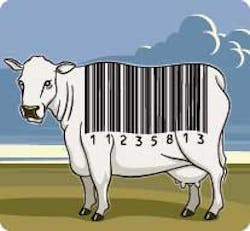Food/Beverage: Process Genealogy Supports Traceability
Walt Staehle, food and beverage industry manager for automation supplier Siemens Industry, Inc., says they should do this not only in light of new regulatory implications, but also in the context of how automation software can help them improve their overall business efficiency and performance, while reducing their recall risk profile and protecting the value of their brand.
Product traceability within the food and beverage supply chain documents where intermediate and final products are, where they are going and where they came from, says Staehle. An important capability of a traceability system is handling recalls quickly and efficiently, to limit the spread of illness and damage to customers’ confidence and trust to a producer’s brand. At the same time, producers need to respond to increasing market demands for more products, for shorter time-to-market and for multi-site production, all of which requires them to create strict production protocols that always ensure high quality output.
It’s important to note that traceability is a plant issue and not a business one. That’s because it’s only at the plant level that you can achieve the right visibility of the individual product lots and their process CCPs. Plant IT infrastructure must support continuous integration of production operations and shop-floor activities to effectively monitor where and when ingredients and intermediate products are moved and transformed or where and when final products are stored or shipped.
Process genealogy supports traceability by providing two key functions: One is called “genealogy execution,” which builds a record of the myriad production steps taken inside a plant; the other is called “genealogy analysis,” which provides the means to display upstream or downstream information from any point within the plant or, given extended interoperability with the systems of suppliers and channel customers, within the supply chain. If a recall is needed, every ingredient can be traced for every product. If done soon enough, product lots can be recalled before their goods reach a store, saving customers from possible illness and saving producers expense and brand damage.
Manufacturing execution systems (MESs) can build comprehensive product genealogies by recording data on any inbound ingredient such as ID number, incoming date and time, its supplier’s delivery information and so forth. The systems then can record every step of those ingredients’ processing along the entire manufacturing lifecycle. This includes their transformation into intermediate materials and where they flow through the plant. In case of contamination, finding out where and when products were processed, moved and stored during production becomes quick and easy, thanks to a complete genealogical history of a product.
Given the critical importance of food safety and food defense to producers, both need to be viewed not as expenses but as an important capital investment in the future of their businesses, says Staehle. The same return on investment (ROI) criteria should be used, just as if a new production line or packaging machine is being considered.
Take, for example, the fact that an average recall costs $10 million, not counting hidden contingent costs. For a producer with $100 million in annual sales and 10 percent net margins, a recall’s cost of that size would wipe out bottom line profit for the year.
A high-quality food safety and defense program, with the former based on Siemens Totally Integrated Automation (TIA) environment coupled with an MES, would require up to a million dollars in startup capital investment. Amortized over 10 years, that’s $100,000 a year. Add to that a 15 percent operating cost of $150,000 a year and the total annual investment in comprehensive food safety and defense protections would be $250,000 or about 0.25 percent of annual revenue.
This would seem a reasonable investment in protecting annual profits and brand equity, which in quantified terms, would be the sum to-date of all investments in promotion and distribution during the life of the product.
Notably, this investment calculation only takes into consideration the cost avoidance of a recall and does not include other quantifiable benefits from a TIA/MES combination, such as greater operating precision, production line flexibility and product throughput, while realizing labor savings through automation.
Subscribe to Automation World's RSS Feeds for Columns & Departments
